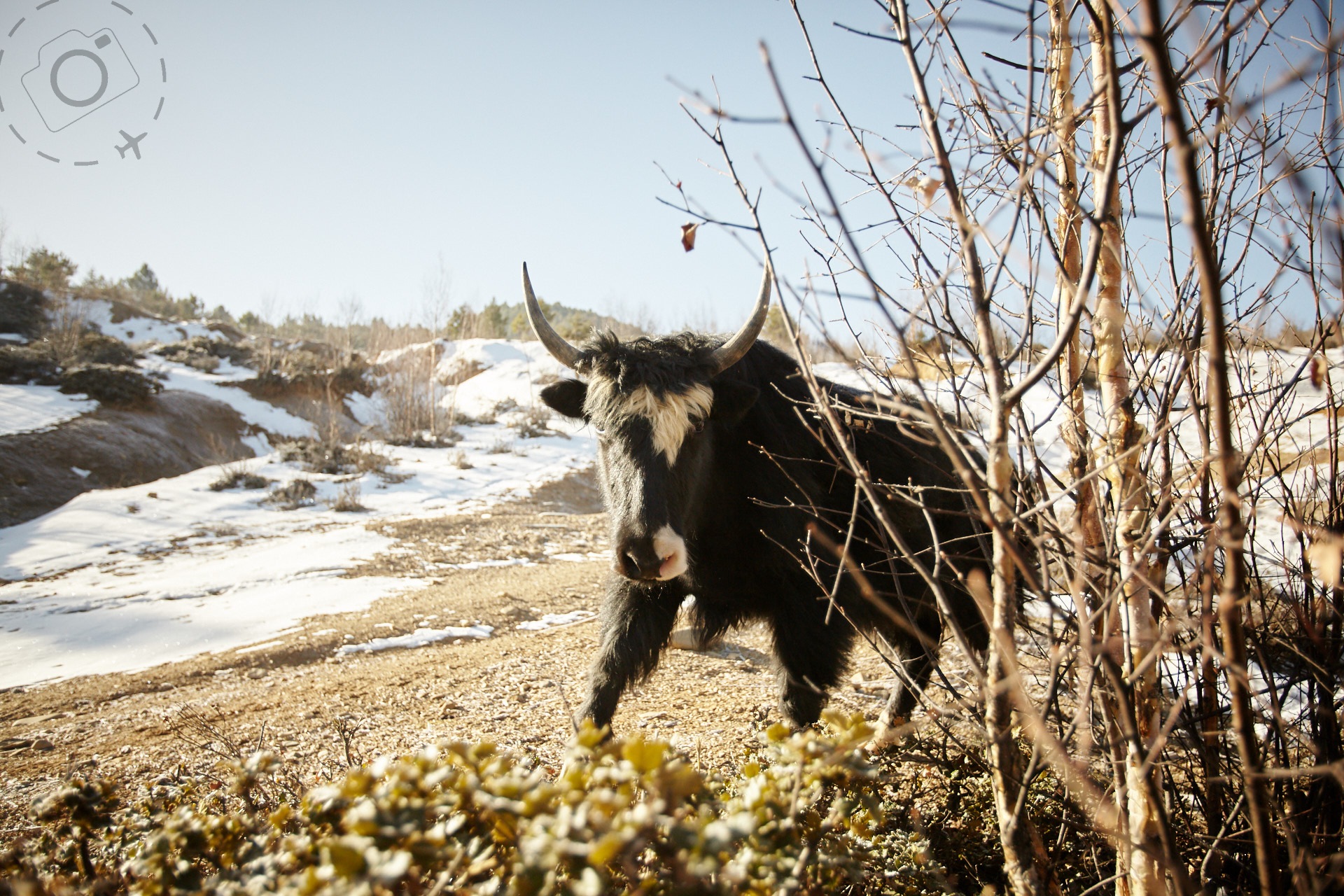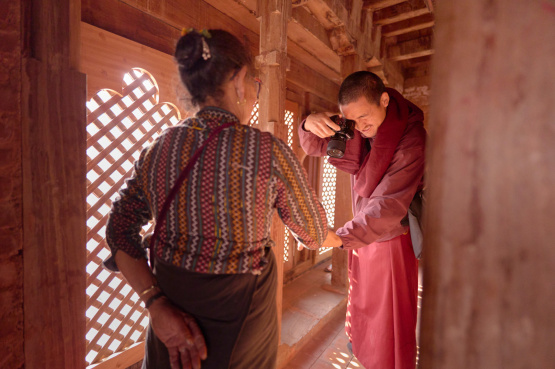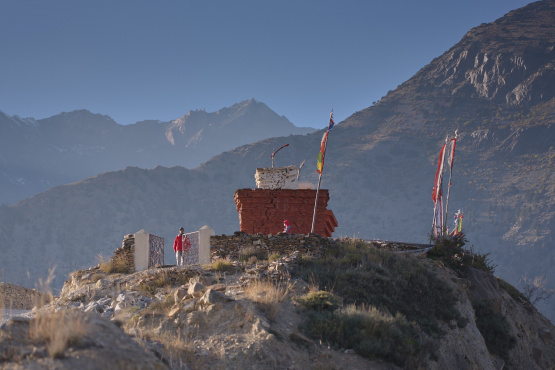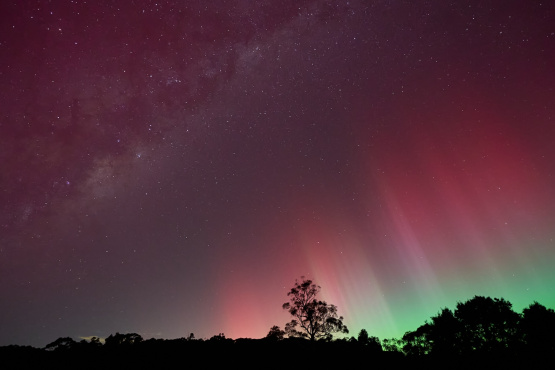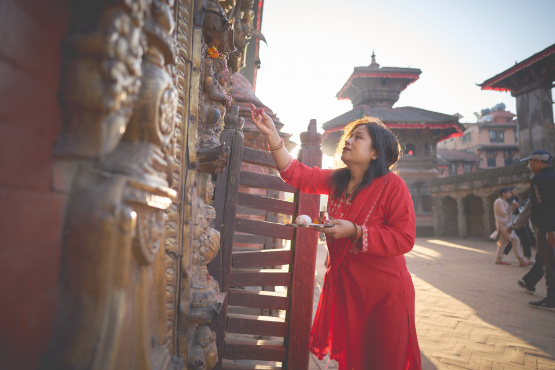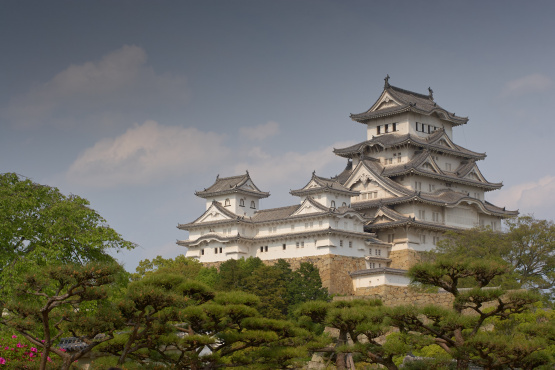Lijiang has a reputation for its old town, which clearly was once a charming relic of Yunnan's cultural past. The town was built in the shadows of Jade Dragon Snow Mountain, a dramatic collection of summits that rise above the surrounding valleys like a protective father. Glaciers from the mountain supply fresh water year round. In Lijiang a series of small canals tame the incoming streams, guiding the flow through cobbled streets and safely on its way to fertile farmlands.
For centuries this timber and stone village was a popular but peaceful centre of culture for the Naxi ethnic people, most noted for their adherence to a pictographic writing sytem. In many ways Lijiang was the town time forgot.
The pace of tourism growth within China has changed all that. Literally millions of Chinese tourists now flood into the region each year to get a taste of Lijiang's traditions. Old Town Lijiang has become more of a theme park than a cultural experience. Bus loads of tour groups are marched through the streets while guides talk into microphones with the volume cranked up high. The town that time forgot has been strangled by its own success.
There is still plenty of colour in the cobbled laneways, but it's mostly souvenirs. Tea, trinkets and trash fill every doorway. Overpriced cafes and underwhelming guesthouses take up the remaining buildings. There is little evidence of local residents, they've moved out where the land is cheaper and quieter. One old man still walks the streets of the old town dressed in his vibrant "Chinese silks" while smoking a pipe. Like most things in the old town he was probably genuine once but now sells himself at a price.
The rapid pace of tourism growth in towns like Lijiang leaves a searing mark. Tourism becomes a gold rush and the fast money attracts low standards and high ticket prices. Access to the old towns, scenic gardens and iconic reflection pools are all at a price. Currently they are lengthening the airport at Lijiang to cater for international flights, and a new train line that connects to the capital at Kunming will be operational soon. There's no going back from here.
On my first trip to Yunnan I stayed at the Banyan Tree at Lijiang, which in hindsight was a blessing. It's nicely removed from the mayhem of downtowns tourism typhoon, but with all the trimmings you'd expect from a five-star facility. It's trump card is the Jade Dragon Snow Mountain, its stunning peaks popping into view as you move about the resort. It provides a backdrop to the manicured gardens of the resort, a feature for diners in the restaurants and, for a handful of lucky guests, it's the first thing they see when they draw back the curtains of a morning.
In Chinese the mountain is called Yu Long Xue Shan, and the Chinese flock there in the thousands every day. An impressive cultural show with a cast of hundreds is performed twice daily at the foot of the mountain, and combinations of cable cars take sightseers up to high meadows and glacier parks.
Below the popular peak are a handful of villages where you can still get a glimpse of traditional lifestyles of the Naxi and Bai people. Donkeys are still used to haul manure, grain husks are stripped by hand and homes are made with timber and mud instead of concrete and steel. People here have satellite TV and mobile phones as well, but when they talk of running water it literally flows through the streets and on to the next village.
Banyan Tree Lijiang is a 15 minute walk from Lijiang's smaller old town, Shuhe. This has the benefit that you can stroll through the vegetable fields that line the river north of town and avoid the worst of the souvenir stalls. This end of Shuhe has retained a decent dose of its own charm, as locals still work the soil and Naxi families can be seen wearing their traditional clothing in the fields. Their clothes are as practical as they are unique.
As you near the centre of Shuhe old town the tell tale signs of modern Chinese tourism become evident. Lovely old buildings have been converted into chic cafes, complete with lounges and sundecks filled with university students on holiday. Tea houses serve traditional Naxi cuisine and the guesthouses on the quite edge of town are cheap, cheerful and clean. The growth out here has been a little slower than in Old Town Lijiang, and hence a little more elegant.
The majority of visitors to Shuhe still have to pay an entrance fee as their bus rolls into the carpark, and where the streets are most concentrated with souvenirs the municipality has ensured that brightly dressed performers put on a "traditional" show every hour. "Flooding the streets" is the speciality in Shuhe -- Naxi girls and boys dance and beat drums while water from the street canals is pooled with a make-shift dam, then released in a surge that rushes across the cobblestones.
The show is symbolic of a time when horse droppings had to be flushed away, and it left me wondering how much water you would need to clean up the tacky stalls.
Banyan have two properties in Yunnan, one in Lijiang and the other high in the Kham Tibet region outside Shangri-La. The drive from one to the other is spectacular, and it emphasises the depth of culture within Yunnan province. In the morning you start from Lijiang and follow the highway around vast lakes, through hamlets and fields and start climbing into the mountains. The journey north to Shangri-La passes villages of several ethnic minorities such as Bai and Yi.
On market days you can find yourself in a traffic jam on these small roads, but you also get a chance to encounter a dozen ethnic groups, maybe more. Yunnan boasts 25 ethnic minorities in all.
Less than two hours north of Lijiang is the Tiger Leaping Gorge, an impressive natural feature that breaks the long drive. Buses pull up to let snap-and-go tourists see the Tiger Leaping Stone, which legend has it the tiger used to leap across the raging river. The main attraction here is not so much the gorge, but trekking through the valley. A series of isolated guesthouses run by Naxi families dot the hills, connected by precarious trails that edge along the granite outcrops.
Only a trickle of the millions who visit Lijiang take the time to head north to trek in the mountains. It's their loss as the peaceful farming communities that dot the vast landscape are genuine treasures. A few of the locals now run guesthouses to cater for the trekkers, and the blend of tourism and farming is working well for everybody.
The road heads north and the altitude climbs from 2200m at Lijiang to 3200m at Shangri-La. In early spring the ground is still covered in snow, with temperatures below zero at night and just a few degrees above zero in the day. By early summer the mountain meadows of Shangri-La are in bloom with wildflowers. The city was known as Zhongdian but was renamed recently by the Chinese government, who claim this is the city written about in the James Hilton novel called Lost Horizons. Ironically the Chinese have great difficulty pronouncing the new name of the city, so the official name has become Xiang-Ge-Li-La.
After the bustle of Lijiang the charms of Zhongdian are overwhelming. The old town is truly beautiful but hasn't reached that frenetic crush of Lijiang yet. It probably never will, as the higher altitude and geographical distance make it less appealing to the lazy traveller. There are lots of pleasant guesthouses in the old town, some great places to dine and an abundance of coffee shops. The main square is filled with food stalls during daylight hours, grilling up bits of yak meat and bread laced with chili and spices.
At dusk the square clears out the locals gather for a dance. Sure they do it for the tourists, but they don't bother with flash costumes - what you see is what you get and they end the working day on a laugh.
A short drive from the town centre is Songzanlin monastery, easily one of the most remarkable Tibetan sights you can visit without actually going into Tibet. Hidden behind a valley away from the city, overlooking a serene lake, the monastery complex contains dozens of temples, prayer halls and chortens. Hundreds of monks live and study inside these walls, robed in dark red cloth they stand in contrast to the earthy tones of the buildings. Flashes of gold brighten the more sacred sights and the scent of burning incense lingers through the air. Songzanlin is a city in itself, an overwhelming place to experience.
Finding accommodation in Zhongdian is not hard and there are too many guesthouses given the modest flow of tourists, even during peak months of May and October. The town is a staging post for travellers heading into the Tibetan lands north-west of Yunnan, but political tensions in that region over the last few years has put a dampener on the numbers. Old Town Zhongdian has a fair number of residents still, but you can't escape the obvious influences of tourism. Souvenirs shops dominate the main streets, few cafes open before 9am and half the town is serviced by free wifi internet access.
For a more tangible experience of Tibetan culture you can get out of town and spend a few nights in a quiet village. Ringa is about an hour away from the Zhongdian Old Town, a formerly unheard of village where yak farming and growing barley was its claim to fame. There are no guesthouses out here, no restaurants and no souvenir stalls. It's a farming village with a very modest monastery hidden away on a nearby mountain top. The Buddhists don't make it easy to reach enlightenment, or even to reach the temple.
Ringha does have one place for accommodation, an elegantly disguised Banyan Tree resort. The villas were erected in the exact style of the towns farmhouses. Pale brown tones rendered over mud-brick walls, slate tiled roofs to keep the rain out and massive timber beams that dominate the interior space. A few technological adjustments bring modern comforts to the traditional buildings. Hot tubs and space heaters compliment the silks and woollen textiles.
The reason Banyan Tree Ringha attracts visitors is because of the township itself and the opportunity to get close to their culture. Trekking through the Ringha valley is made easier with the help of a local guide and a horse. The guide makes sure you get to meet the farmers and the horse helps to compensate for the ill-effects of altitude. Ringha is 3600m above sea-level, so if you haven't had a few days to acclimate to the thin air you can quickly be out of breath from the most modest of physical exertion.
Drinking Yak butter tea and eating barley dough is a very different experience when you're sitting inside someone's farmhouse instead of a cafe in Zhongdian Old Town. This is how Kham people live. The yak butter helps keep their skin moisturised and their muscles warmed against the winter cold. Barley provides carbohydrates throughout the year and stores well on the shelf. Dressing with layers of simple textiles not only keeps them warm but stops them from drying out as well.
Having a horse to walk you up to the monastery is a genuine luxury, but potentially essential at the end of a short day trekking. The trail disappears into the mountain and the temple floats above a cloud of prayer flags. Only two monks live at this monastery, but it is one of the oldest in Yunnan. Every day they burn incense, refuel the lanterns and offer devotions to their images of Buddha and Lamas. The prayer hall is decked with coloured silks, dimly light by the lanterns and candles that symbolise the path to enlightenment in a world of darkness.
As travel experiences go this is the exact opposite of Lijiang, and far removed even from downtown Zhongdian. Places like Ringha are the gems that make travel in China something worthwhile, pieces of living culture that have survived for centuries and remain intact despite the tidal wave of domestic tourism.

Keep Reading
Join Ewen's newsletter for monthly updates on new photography articles and tour offers...Subscribe Here

